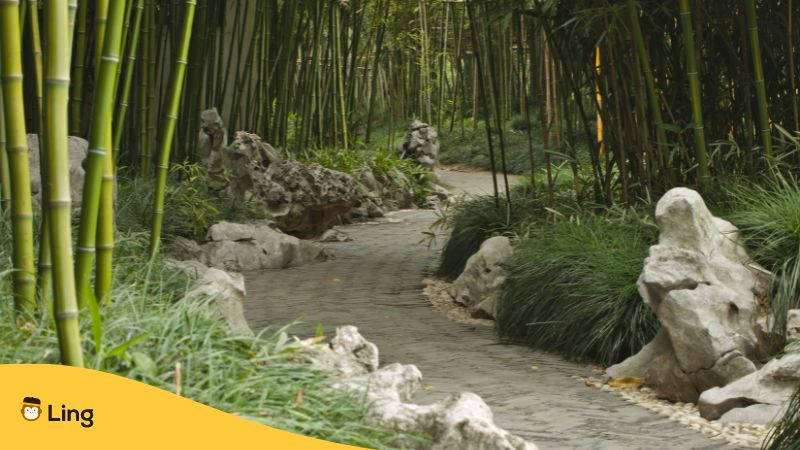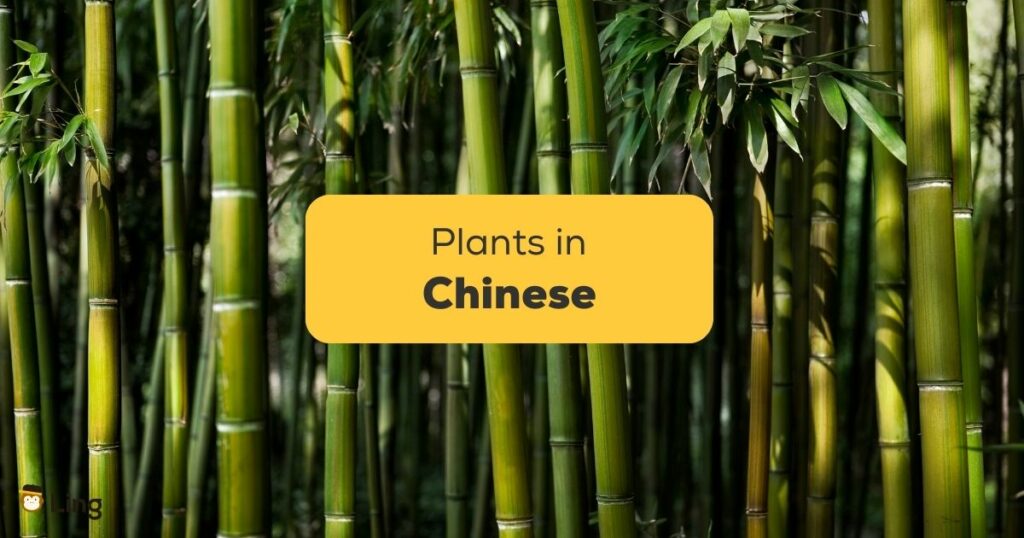Hey, are you ready for an exhilarating lesson on plants in Chinese? Perhaps, you landed on this post because you are interested in gardening as you travel to China or just learn the Chinese language. And who can blame you? Exploring the fascinating world of Chinese plants is like stepping into a magical garden that’s been flourishing for thousands of years. Imagine being captivated by the enchanting beauty of delicate orchids and then standing in awe of the sheer strength of the mighty bamboo.
For sure, it would make you feel speechless, as if no beautiful Chinese words can match what you are seeing. But these Chinese plants aren’t just pretty; they’re keepers of nature’s secrets and ancient wisdom. If you’re a budding botanist, an Asian culture aficionado, or simply someone curious about the wonders of the natural world, brace yourself for an incredible journey into the realm of Chinese plants. Let’s begin!
Plants In Chinese
In Chinese culture, the role of plants, 植物 (Zhíwù), extends far beyond mere decoration. It’s lending a whole new meaning to “plant life!” Imagine a bridge spanning centuries, connecting traditions, mythology and daily life. That’s what 植物 (Zhíwù) does. Each plant or flower, from the dignified peony to the humble chrysanthemum, isn’t just a burst of colorful petals or a breath of fresh air; they’re symbols entwined with deeper meanings and cultural significance.
Take bamboo, 竹 (zhú), for instance. More than just a fast-growing plant that pandas munch on, right? In Chinese culture, bamboo stands for moral integrity and resilience for its natural ability to remain green and flourish in harsh conditions.
Or consider the orchid, 兰花 (lánhuā). Delicate and refined, its intoxicating fragrance doesn’t spread far, symbolizing humility and nobility in the Chinese tradition. Guess that’s why they say “good things come in small packets!”
If you ever find yourself lost amidst the flora and fauna of Chinese culture, remember this – each leaf, each stem, each bloom tells a story, unfurls a philosophy or augments a cultural virtue. So, the next time you see a plant in China, don’t just see – observe, interpret, and appreciate the saga narrated by 植物 (Zhíwù).
Common Plants In China
Ginseng – 人参 (Rénshēn)
Ginseng is a highly prized Chinese plant known for its medicinal properties, particularly its roots. It has been a staple of traditional Chinese medicine for centuries, valued for its potential health benefits, which include boosting energy, enhancing cognitive function, and promoting overall well-being.
Tea plant – 茶树 (Cháshù)
Camellia sinensis, the plant that produces tea, has a significant historical and cultural significance in China because it is the source of one of the world’s most popular libations. From green to black tea, made from this evergreen shrub’s leaves and buds, each is prized for its distinctive flavors and wellness-enhancing qualities.
Bamboo – 竹子 (Zhúzi)
A flexible and quickly expanding plant, bamboo is an integral part of Chinese culture and daily life. It is valued for its durability and adaptability and is employed for a variety of tasks, including building, the arts, and the sustainable production of a wide range of goods, including furniture and cutlery.
Lotus – 荷花 (Héhuā)
The lotus, a symbol of purity and enlightenment, has elegant pink or white blossoms which emerge from the mud and water, representing spiritual growth and the pursuit of enlightenment in Chinese traditions, making it a revered flower in art, literature, and religious symbolism.
Chrysanthemum – 菊花 (Júhuā)
Chrysanthemums are celebrated as the “flower of autumn” and have been cherished in China for over a thousand years. Their vibrant colors and diverse varieties make them a captivating emblem of longevity, endurance, and the changing seasons in Chinese gardens and art.
Orchid – 兰花 (Lánhuā)
With its exquisite blooms, the orchid, dubbed the “gentleman of flowers” in Chinese tradition, conveys grace and refinement. The orchid is revered for its understated elegance and is a beloved theme in Chinese art and literature because it represents nobility and scholastic endeavors.
Plum blossom 梅花 (Méihuā)
The plum blossom, China’s beloved winter flower, blooms courageously amidst the frost, symbolizing resilience and hope during adversity. Its exquisite petals and delicate fragrance have inspired poets and artists for centuries, portraying the enduring spirit of the Chinese people.
Peony – 牡丹 (Mǔdān)
The plum blossom, with its ethereal beauty and unyielding spirit, stands as a poignant emblem of resilience in Chinese botanical symbolism.
Chinese Elm – 榆树 (Yúshù)
The Chinese Elm, known for its graceful form and resilient nature, is a revered tree in Chinese horticulture, symbolizing strength and endurance in the face of changing seasons. Its distinctive serrated leaves and widespread use in bonsai cultivation have made it a cherished emblem of harmony and longevity.

Chinese Gardening Vocabulary
Learning Chinese gardening vocabulary isn’t just words – it’s a key to unlocking a cultural treasure trove, a chance to delve into ancient horticultural wisdom, and a way to connect with the language of nature.
| English | Chinese | Pronunciation |
|---|---|---|
| Seeds | 种子 | Zhǒngzǐ |
| Green plants | 绿色植物 | Lǜsè zhíwù |
| Garden | 花园 | Huāyuán |
| Plant | 种植 | Zhòngzhí |
| Soil | 土壤 | Tǔrǎng |
| Flowers | 花 | Huā |
| Vegetable | 蔬菜 | Shūcài |
| Tree | 树 | Shù |
| Watering | 浇水 | Jiāoshuǐ |
| Harvest | 收获 | Shōuhuò |
| Fertilizer | 肥料 | Féiliào |
| Garden bed | 种植床 | Zhòngzhí chuáng |

Cultivating The Art Of Chinese Gardening
The Art Of Bonsai
China has a long-standing horticultural culture known as bonsai, which is a small kind of tree care. These little trees’ precise shape and trimming serve as a powerful metaphor for the close relationship between humans and nature.
Tranquil Beauty Of Chinese Gardens
Landscape architecture masterworks include the traditional Suzhou gardens in China. They do this by incorporating different kinds of plants, water features, and elaborate patterns to produce tranquil settings for reflection.
Learn Chinese With Ling!
Exploring the lush landscapes and vibrant flora of China is like embarking on a thrilling adventure, isn’t it? But what if we told you that this journey could lead you not only to discover the secrets of Chinese plants but also unveil the long life and cultural significance they hold? Well, get ready for an exciting linguistic voyage with the Ling app!
The Ling app is an incredible language-learning app that takes the art of learning Chinese and over 60 other languages to a whole new level by turning it into a gamified experience that’s as engaging as it is fun! Ready to unlock the mysteries of this Asian language and culture while having a blast along the way? Then it’s time to take the plunge! Download the Ling app now from Google Play or the App Store!


































































